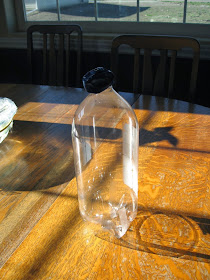Our schoolwork shifted gears abruptly yesterday, when we spotted baby ground squirrels emerging from a hole in the vacant lot next to our house. Most of our afternoon was spent observing them, and Googling a few quick facts about them to back up our observations.
We seem to have six babies. We couldn't get too close to take pictures without Mom running in to chase all the babies back into their hole.
But, we enjoyed watching them through our kitchen windows, as they explored and played, on their first day above ground.
Female Richardson's ground squirrels produce one litter per year. The young, up to 8 in a litter, are born in April or May. Young ground squirrels remain underground in the burrow until they are approximately 30 days old. (from Wikipedia)
At the age of 29-30 days and weighing between 65 and 85 grams, the young first emerge from their natal burrow. They immediately begin eating solid food, soon becoming nutritionally independent of their mother. At 50 days of age, juveniles molt the baby fur and grow in their adult fur coat. (from exoticnutrition.com)
Social system:
- each adult female has her own burrow system
- each adult female rears her own litter alone and without assistance from the father(s)
- daughters settle near their birth site; sons disperse from the birth site
- females form matriarchal society based on maternal kinship (from research.uleth.ca)
A young / baby of a Richardson is called a 'pup, kit or kitten'. The females are called 'doe' and males 'buck'. A Richardson group is called a 'dray or scurry' (from thewebsiteofeverything.com)
By the time they emerge, the babies are nearly the size of their mother, but are much lighter in color, and extremely curious, and playful.



















































